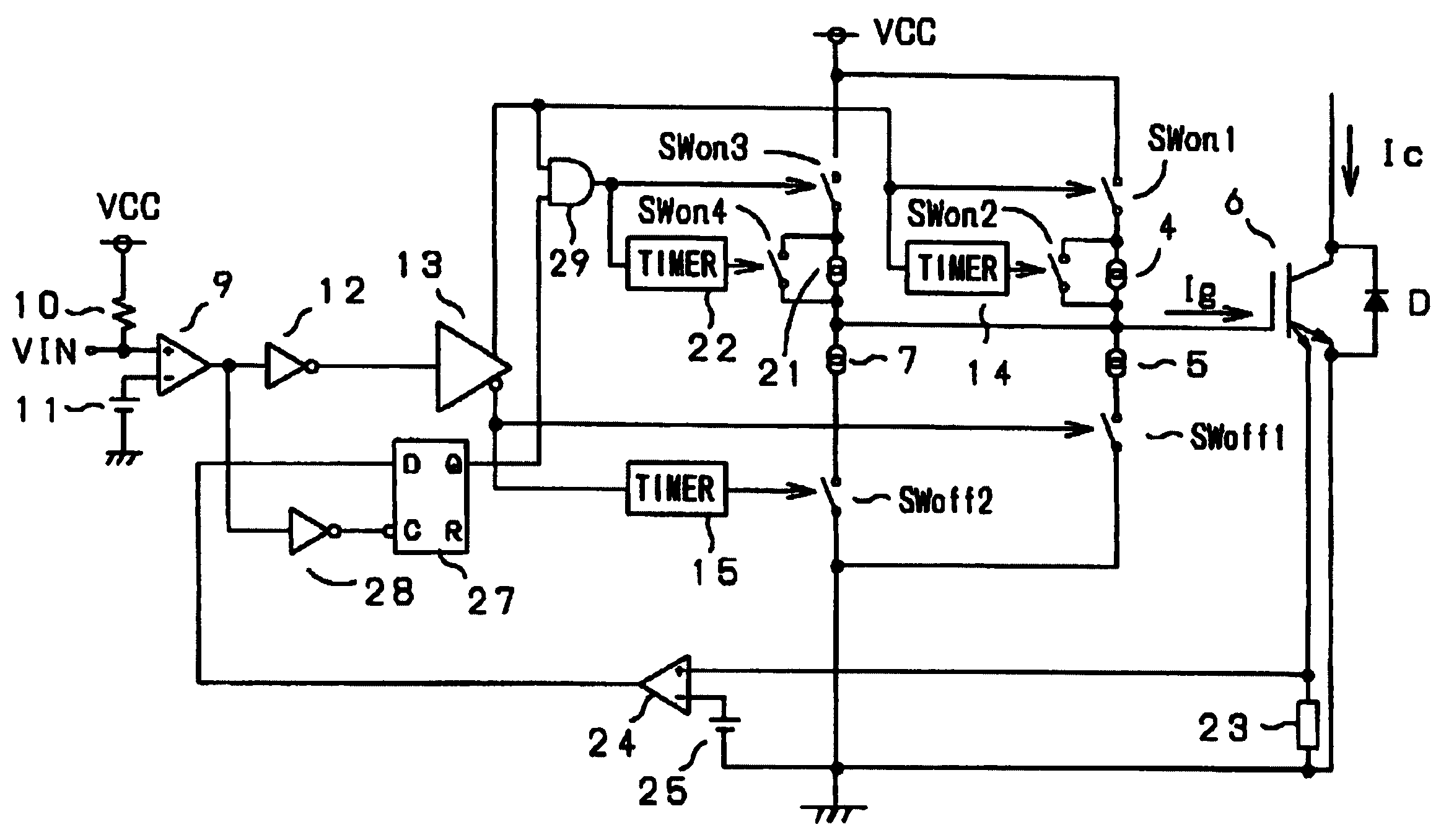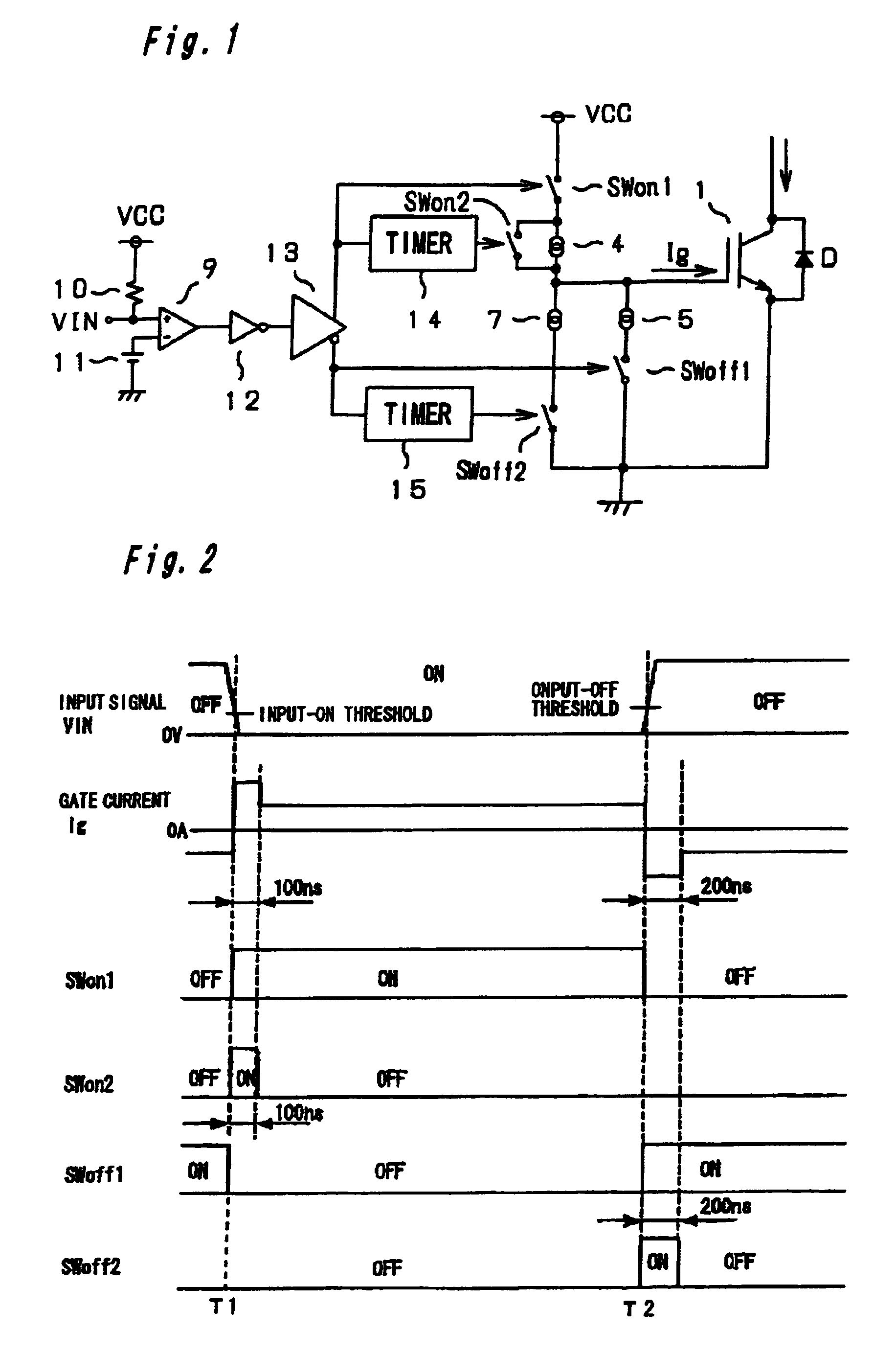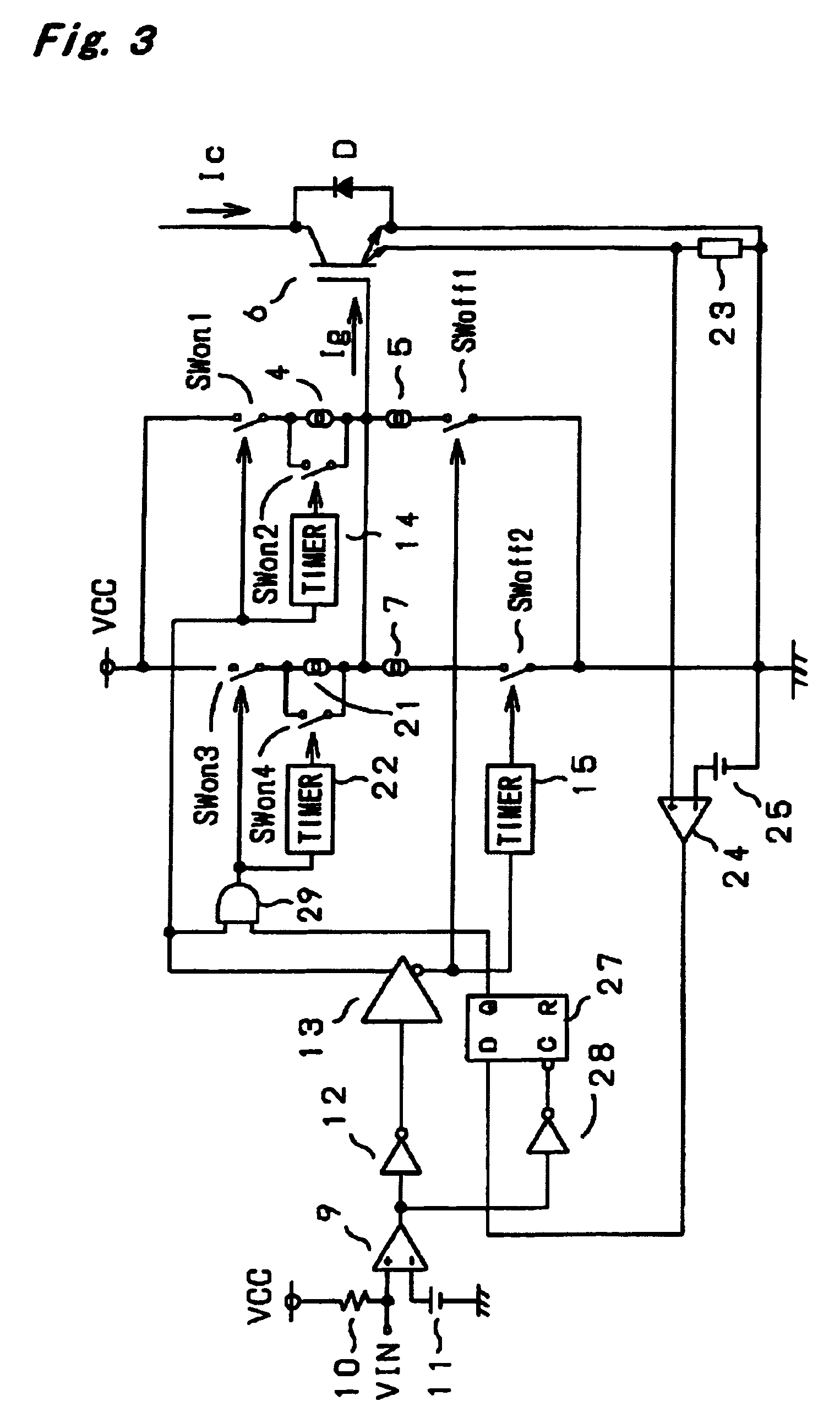Semiconductor apparatus
a technology of semiconductor and apparatus, which is applied in the direction of valve operating means/release devices, pulse generators, pulse techniques, etc., can solve the problems of deterioration in efficiency, delay time, and relatively large delay time of mos-type devices, and achieves stable operation of mos-type devices, simple configuration, and improved response and efficiency.
- Summary
- Abstract
- Description
- Claims
- Application Information
AI Technical Summary
Benefits of technology
Problems solved by technology
Method used
Image
Examples
first embodiment
[0019][First Embodiment]
[0020]FIG. 1 shows a MOS-type power device and a drive system thereof in a tail-end circuit of a semiconductor apparatus according to a first embodiment of the present invention. For turning on the gate a power device (e.g. IGBT) 1 associated with a freewheel diode D, two switches SWon 1, SWon 2 (or first and third switches) each composed of a transistor are inserted in series between a power supply VCC and the gate of the power device 1. A constant current device 4 is connected in parallel with the switch SWon 2.
[0021]For turning off the gate of the power device 1, a switch SWoff 1 (or second switch) composed of a transistor is connected between the gate and emitter of the power device 1 through a constant current device 5, and a switch SWoff 2 (or fourth switch) composed of a transistor is connected between the gate and emitter of the power device 1 through a constant current device 7.
[0022]An input signal VIN is entered into a positive input terminal of a ...
second embodiment
[0032][Second Embodiment]
[0033]A second embodiment of the present invention is configured such that in accordance with the amount of the current flowing through an IGBT turned on according to a first turn-on operation, a gate charge current in a second turn-on operation subsequent to the first turn-on operation is varied to change a switching speed during turn-on of the gate. FIG. 3 shows a tail-end circuit of a semiconductor apparatus according to the second embodiment.
[0034]In the circuit of FIG. 3, the same component or element as that in FIG. 1 is defined by the same reference numeral or code. As shown in FIG. 3, in addition to a turn-on circuit comprised of a switch SWon 1, a switch SWon 2, a constant current device 4 and a timer 14, the circuit additionally includes a switch SWon 3, a switch SWon 4, a constant current device 21 and a timer 22, as a second turn-on circuit. The following circuits are added in order to control this 2nd turn-on circuit.
[0035]An IGBT 6 has a second...
PUM
 Login to View More
Login to View More Abstract
Description
Claims
Application Information
 Login to View More
Login to View More - R&D
- Intellectual Property
- Life Sciences
- Materials
- Tech Scout
- Unparalleled Data Quality
- Higher Quality Content
- 60% Fewer Hallucinations
Browse by: Latest US Patents, China's latest patents, Technical Efficacy Thesaurus, Application Domain, Technology Topic, Popular Technical Reports.
© 2025 PatSnap. All rights reserved.Legal|Privacy policy|Modern Slavery Act Transparency Statement|Sitemap|About US| Contact US: help@patsnap.com



